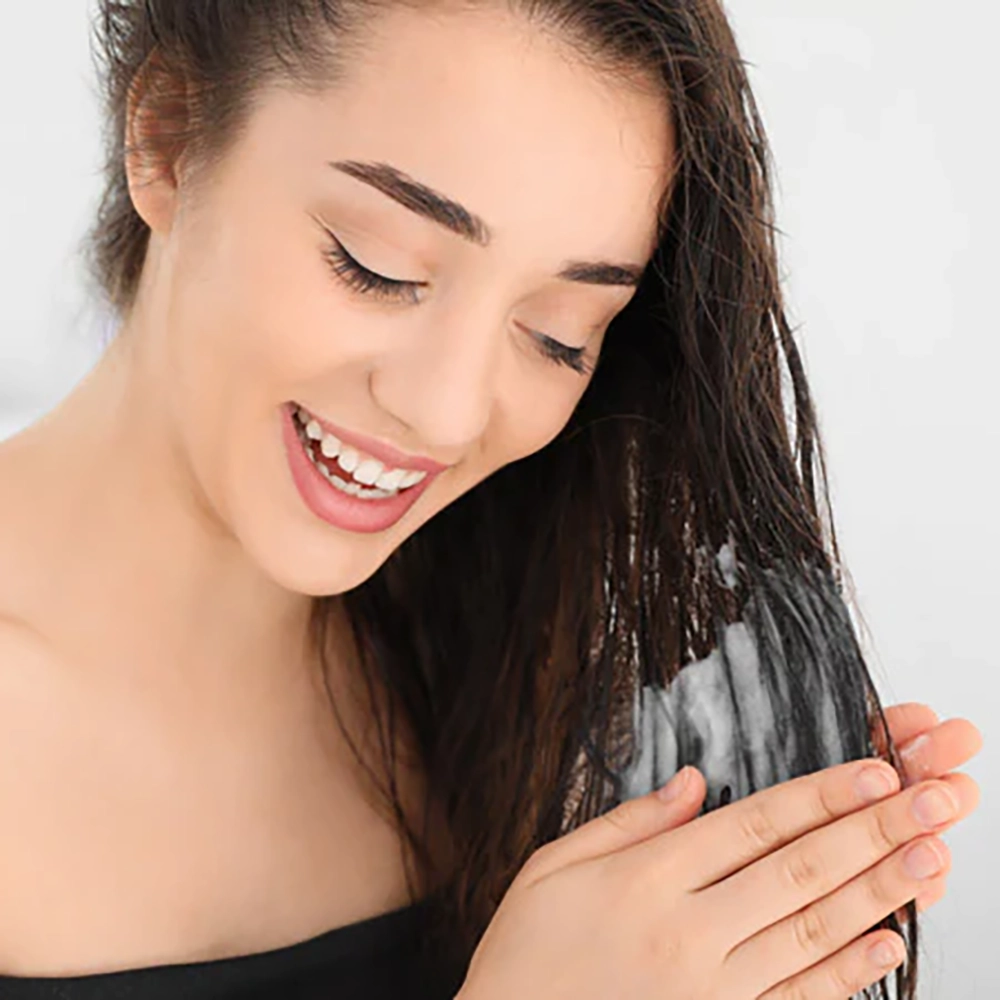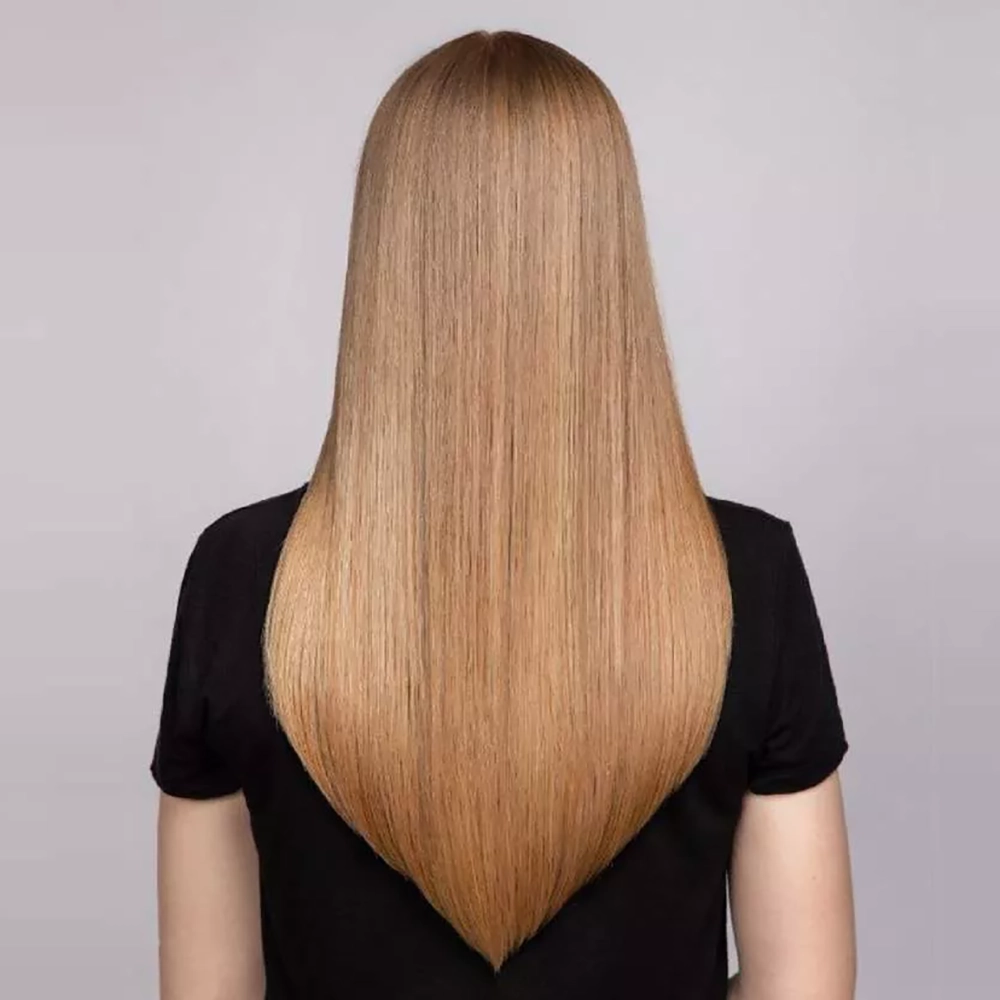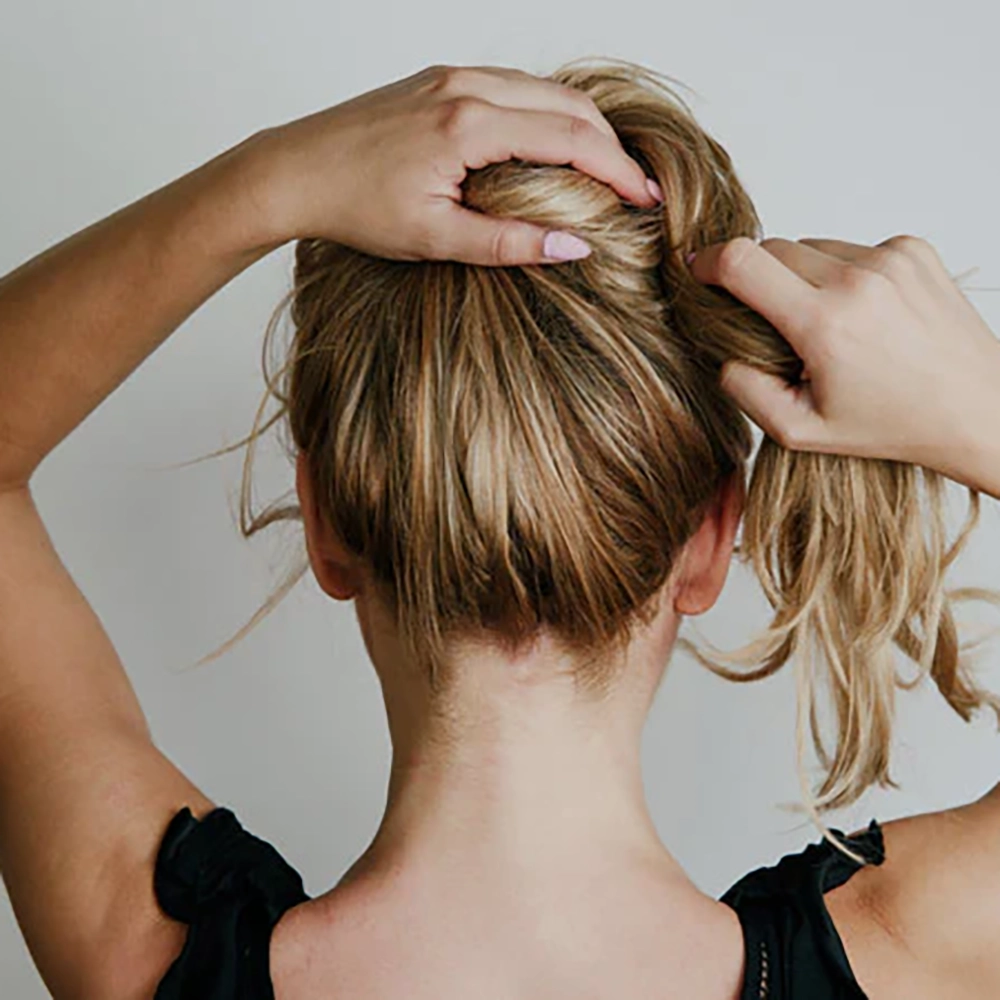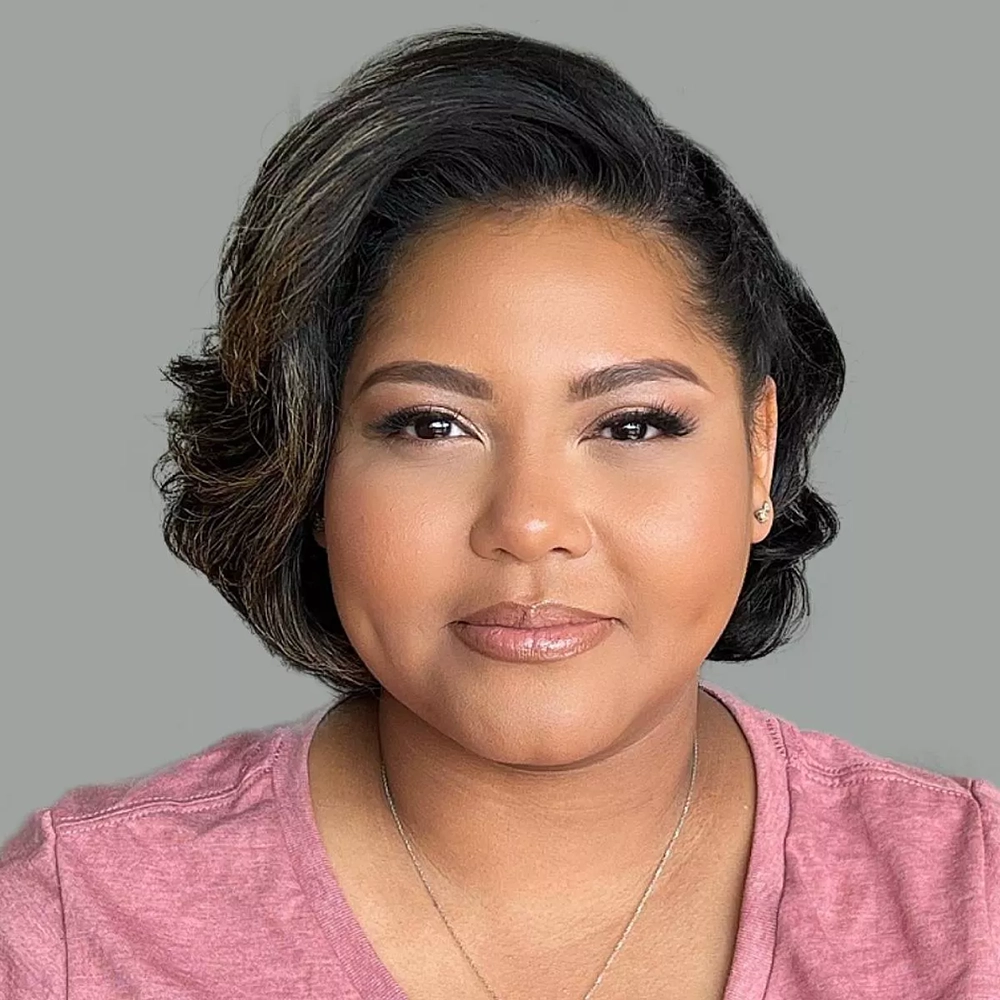Understanding the impact of hair dye
Hair dye has become a popular choice for many people who want to change their hair color. Whether it’s a subtle highlight or a dramatic transformation, hair dye offers endless possibilities. However, it’s important to understand the impact that hair dye can have on our hair and overall health.
Firstly, it’s crucial to acknowledge that hair dye contains chemicals that can potentially damage our hair. The main chemical culprit is ammonia, which is known to strip away the hair’s natural pigment and open up the hair cuticle to allow the dye to penetrate. This process can lead to dryness, brittleness, and breakage if not properly cared for. Additionally, many hair dyes also contain peroxide, which can further weaken the hair and cause it to become more porous.
Moreover, hair dye can also have a negative impact on our scalp and skin. The harsh chemicals can cause irritation, redness, and itchiness, especially for those with sensitive skin. Some people may even experience allergic reactions to certain ingredients in hair dye, leading to more serious complications. In rare cases, hair dye can cause chemical burns on the scalp, resulting in pain and discomfort.
Despite these potential drawbacks, technology has improved over the years, and there are now hair dye options that are less damaging to the hair. For example, ammonia-free and semi-permanent dyes are becoming increasingly popular as they offer a gentler alternative. These dyes still contain small amounts of chemicals but are generally considered to be less harsh on the hair and scalp.
List of potential impacts of hair dye:
| Dryness | Dyeing your hair can strip away its natural oils, leading to dry and brittle strands. |
| Breakage | The chemical process of hair dye can weaken the hair, making it more prone to breakage. |
| Irritation | Harsh chemicals in hair dye can cause irritation, redness, and itchiness on the scalp and skin. |
| Allergic reactions | Some individuals may have allergic reactions to certain ingredients in hair dye. |
| Chemical burns | In rare cases, hair dye can cause chemical burns on the scalp, resulting in pain and discomfort. |
It’s important to note that taking proper care of our dyed hair can minimize the potential negative impacts. Using moisturizing hair masks, avoiding excessive heat styling, and using products specifically designed for colored hair can help maintain its health and vibrancy. Additionally, it’s advisable to consult a professional hairstylist to ensure the correct application and minimize any potential risks.
Overall, understanding the impact of hair dye is essential before deciding to change our hair color. While it offers a way to express ourselves and experiment with different looks, we must be aware of the potential risks and take steps to protect and care for our hair and scalp.
Identifying the causes of hair color change
Have you ever wondered why your hair color changes over time? It’s a common concern for both men and women, and understanding the causes behind this phenomenon can help you better address and potentially prevent hair color change. In this blog post, we will explore some of the most common factors that contribute to hair color change and how you can identify them.
1. Genetics: One of the primary factors that determine your hair color is your genetics. Genes passed down from your parents play a significant role in determining the amount of melanin (pigment) in your hair. If your parents or grandparents experienced hair color changes as they aged, there is a higher chance that you may also experience similar changes.
2. Aging: As we age, our hair follicles undergo natural physiological changes that can result in hair color change. Melanocytes, the cells responsible for producing melanin, gradually reduce in number and activity with age. This reduction in melanin production can lead to graying or lightening of hair color.
3. Environmental Factors: Excessive exposure to sunlight, pollution, and harsh chemicals can also contribute to hair color change. UV rays from the sun can damage the hair shaft, leading to the loss of melanin and a change in hair color. Similarly, exposure to certain chemicals, such as those found in hair dyes or styling products, can cause hair color to fade or alter.
Identifying the causes of hair color change is the first step in addressing the issue. By understanding the role of genetics, aging, and environmental factors, you can take proactive measures to prevent or minimize unwanted hair color changes. Remember to take care of your hair by using products specifically designed to protect against UV damage and avoid excessive use of chemical treatments. Embrace your natural hair color and make the most of the unique beauty it brings!
| Common Causes of Hair Color Change: | How to Identify Them: |
|---|---|
| Genetics | Look for patterns of hair color change in your family members |
| Aging | Monitor the gradual graying or lightening of your hair color over time |
| Environmental Factors | Consider your exposure to sunlight, pollution, and chemicals in hair care products |
Exploring natural remedies to reverse hair color
When it comes to hair color, many people are constantly looking for ways to change or enhance their natural shade. However, there are also individuals who wish to reverse the process and go back to their original hair color. If you fall into this category, you may be interested in exploring natural remedies to help you achieve your desired results.
One of the most common causes of hair color change is aging. As we get older, our hair follicles produce less melanin, which is responsible for giving hair its pigment. This can result in hair turning gray or white. While this process is natural, there are certain natural remedies that claim to help restore your natural hair color.
One natural remedy that is often recommended is the use of onion juice. Onion juice is believed to be rich in catalase, an enzyme that helps break down hydrogen peroxide, which is one of the main factors that contribute to hair turning gray. Massaging onion juice onto your scalp and leaving it on for a period of time is said to promote hair regrowth and help restore your natural color.
In addition to onion juice, other natural remedies such as black tea and henna have been used for centuries to darken hair color. Black tea contains tannins, which can help add depth and richness to your hair. Henna, on the other hand, is a natural dye that can provide a reddish tint to your hair. These remedies can be used alone or in combination with other ingredients to achieve the desired results.
- Onion juice
- Black tea
- Henna
While natural remedies can be an appealing option for those looking to reverse their hair color, it’s important to manage your expectations. The effectiveness of these remedies may vary from person to person, and it’s possible that you may not achieve the exact results you desire. Additionally, it’s important to remember that hair regrowth is a slow process and patience is key.
In conclusion, exploring natural remedies to reverse hair color can be an exciting journey for those looking to embrace their original shade. However, it’s important to keep in mind that these remedies may not work for everyone and it’s always best to consult with a professional before making any significant changes to your haircare routine. Remember, the key to beautiful hair is finding what works best for you and embracing your natural beauty.
The importance of a healthy diet for hair pigmentation
A healthy diet plays a crucial role in maintaining the pigmentation of our hair. The food we consume directly affects the health and appearance of our hair, including its color. Hair pigmentation is determined by the presence of melanin, the natural pigment that gives color to our hair, skin, and eyes. Adequate nourishment and the intake of essential nutrients are vital for the production and maintenance of melanin levels in the body, thus keeping the hair’s natural color vibrant and vibrant.
A diet rich in vitamins, minerals, and proteins is essential for optimal hair pigmentation. Vitamin A is essential for the production of sebum, an oily substance that moisturizes the scalp and keeps the hair healthy. Foods such as carrots, sweet potatoes, and spinach are excellent sources of vitamin A. Vitamin E, found in nuts, seeds, and leafy greens, helps enhance blood circulation to the scalp, ensuring a healthy supply of oxygen and nutrients to the hair follicles.
Iron is another crucial nutrient for hair pigmentation. It helps in the production of hemoglobin, which carries oxygen to the hair follicles. Deficiency of iron can lead to hair loss and premature graying. Foods rich in iron include red meat, beans, lentils, and leafy greens. Additionally, including foods high in omega-3 fatty acids like salmon, flaxseeds, and walnuts can promote scalp health and maintain the natural shine and luster of the hair.
Proteins, the building blocks of hair, are vital for maintaining hair pigmentation. Including sources of high-quality protein such as lean meats, fish, eggs, and dairy products in your diet helps provide the necessary amino acids for hair growth and pigmentation. Zinc, found in foods like oysters, pumpkin seeds, and chickpeas, also plays a role in hair follicle health and melanin production.
By adopting a balanced diet that includes these essential nutrients, you can promote and preserve the pigmentation of your hair. Ensuring a healthy intake of vitamins, minerals, proteins, and omega-3 fatty acids supports the production of melanin and provides the necessary nourishment for vibrant, naturally colored hair. Remember, a healthy diet not only benefits your overall well-being but also helps you maintain your desired hair color.
- Include foods rich in melanin-producing nutrients like vitamin A, vitamin E, iron, omega-3 fatty acids, proteins, and zinc.
- Consume sources of high-quality protein such as lean meats, fish, eggs, and dairy products.
- Incorporate a variety of fruits and vegetables into your diet for their essential vitamins and minerals.
- Consider taking supplements if you are unable to meet your nutritional needs through your diet alone.
- Drink an adequate amount of water daily to keep your hair and scalp hydrated.
| Nutrient | Food Sources |
|---|---|
| Vitamin A | Carrots, sweet potatoes, spinach |
| Vitamin E | Nuts, seeds, leafy greens |
| Iron | Red meat, beans, lentils, leafy greens |
| Omega-3 fatty acids | Salmon, flaxseeds, walnuts |
| Proteins | Lean meats, fish, eggs, dairy products |
| Zinc | Oysters, pumpkin seeds, chickpeas |
Ensure your diet includes a variety of these nutrient-rich foods to support healthy hair pigmentation and enjoy vibrant, naturally colored hair.
Effective hair care routines for restoring natural color
Effective Hair Care Routines for Restoring Natural Color
It is no secret that many people desire to have luscious, vibrant hair with a natural color. However, due to various factors such as aging, stress, and environmental exposure, our hair color may fade or change over time. If you are looking to restore your natural hair color without resorting to chemical treatments, there are several effective hair care routines you can incorporate into your daily routine. These routines not only promote healthy hair growth but also help in bringing back your natural color.
One of the key factors in restoring natural hair color is maintaining a healthy scalp. Our scalp plays a significant role in hair pigmentation, so it is crucial to keep it nourished and free from any issues such as dandruff or dryness. Regularly massaging your scalp using natural oils like coconut oil or olive oil can stimulate the hair follicles and enhance blood circulation, promoting hair growth and restoring its natural color.
In addition to scalp care, choosing the right hair products is essential for restoring natural color. Avoid harsh chemical-laden shampoos and opt for organic or sulfate-free alternatives. These products are gentler on the hair and help in retaining its natural oils, preventing it from becoming dry and losing its color. Additionally, using a deep conditioning treatment once a week can provide the necessary hydration and nourishment to your hair, helping it regain its natural color.
Another important aspect of maintaining and restoring natural hair color is having a nutrient-rich diet. Our hair requires essential vitamins and minerals to stay healthy and vibrant. Including foods such as leafy greens, carrots, avocados, and berries in your diet can provide the necessary nutrients like vitamins A, C, and E, which promote hair growth and help in restoring its natural color. Additionally, consuming foods rich in omega-3 fatty acids such as fish, nuts, and seeds can improve the overall health and appearance of your hair.
List of Foods for Promoting Natural Hair Color:
| Foods | Nutrients |
|---|---|
| Leafy greens (spinach, kale) | Vitamins A, C, E |
| Carrots | Vitamin A, beta-carotene |
| Avocados | Vitamin E, healthy fats |
| Berries (blueberries, strawberries) | Antioxidants |
| Fatty fish (salmon, trout) | Omega-3 fatty acids |
| Nuts and seeds (walnuts, flaxseeds) | Omega-3 fatty acids |
Lastly, protecting your hair from sun damage is crucial in maintaining its natural color. Excessive exposure to the sun’s harmful UV rays can lead to hair color fading. To protect your hair, consider wearing a wide-brimmed hat outdoors or using hair products that contain SPF. Additionally, rinsing your hair with cool water after swimming in chlorinated pools or the sea can help prevent discoloration caused by chemicals or saltwater.
By incorporating these effective hair care routines into your daily regimen, you can promote healthy hair growth and restore your hair’s natural color. Remember, consistency is key, so be patient and give your hair the care it deserves. Embrace your natural beauty and enjoy the journey to luscious, vibrant hair!
Professional treatments to regain your hair color
Your hair color can change for various reasons, such as age, genetics, health conditions, or even exposure to certain chemicals or environmental factors. If you find yourself missing your natural hair color and looking for ways to regain it, professional treatments can be a great option. With the advancements in hair care technology, there are now several salon treatments available that can help you restore your hair color and achieve the desired results.
One of the most effective professional treatments for regaining hair color is hair coloring or dyeing. Professional hair colorists have access to a wide range of high-quality hair dyes that can perfectly match your natural hair color. They have the expertise to assess your hair condition and choose the right shade and formula that will provide the best results. Whether you want to cover gray hair or simply enhance your natural color, a professional hair coloring treatment can give you the desired outcome.
Hair gloss treatment is another popular option for regaining hair color. This treatment involves applying a clear or tinted gloss to your hair, which adds shine and enhances the depth of the color. Hair gloss treatments are often used to revive dull-looking hair or to maintain hair color between dyeing sessions. They can also help to seal the hair cuticles, making your hair look smoother and healthier.
If you prefer a more targeted approach, hair color correction treatments are available at professional salons. These treatments are specifically designed to fix any color mishaps or unwanted hair shades caused by previous dyeing attempts. Whether you want to go back to your natural hair color or change to a different shade, a hair color correction treatment can help you achieve your desired look. The process typically involves removing the existing color and then applying the new color in a controlled manner to achieve the desired result.
When considering professional hair color treatments, it’s crucial to consult with a skilled and experienced colorist. They can assess your hair type, condition, and any specific needs or concerns you may have. Additionally, they can provide personalized advice on the best treatment options for your hair and ensure that the products used are of high quality and safe for your hair and scalp.
List of Professional Hair Treatments for Regaining Hair Color:
- Hair coloring or dyeing: Provides a wide range of shades to match your natural hair color.
- Hair gloss treatment: Adds shine and enhances the depth of the color.
- Hair color correction: Fixes any unwanted or incorrect hair shades.
Table Comparing Different Professional Hair Treatments:
| Treatment | Benefits | Use |
|---|---|---|
| Hair coloring or dyeing | Matches natural hair color | To cover gray hair or enhance natural color |
| Hair gloss treatment | Enhances shine and color depth | To revive dull hair or maintain color |
| Hair color correction | Fixes unwanted or incorrect shades | To change color or go back to natural hair color |
In conclusion, if you’re seeking to regain your natural hair color, professional treatments can be a great solution. Whether you opt for hair coloring, gloss treatments, or color correction, consulting with a professional colorist is crucial to ensure the best results. Professional treatments offer the expertise and high-quality products necessary to revive and restore your hair color effectively.
Tips for embracing and maintaining your natural hair color
Having naturally beautiful hair is something that most people desire. It not only enhances your overall appearance but also boosts your confidence. However, maintaining your natural hair color requires some effort and care. In this blog post, we will share some valuable tips to help you embrace and preserve your hair’s natural color.
1. Protect your hair from harsh environmental factors
The sun’s harmful UV rays, pollution, and excessive heat styling can all contribute to hair color fading over time. To maintain your natural hair color, it is important to protect your locks from these external factors. Consider wearing a hat or using a UV-protective spray when spending time outdoors. Additionally, limit the use of heat styling tools and always apply a heat protectant before using them.
2. Choose suitable hair care products
Selecting the right hair care products is crucial for preserving your natural color. Look for shampoos and conditioners specifically formulated for color-treated hair or those that are free of harsh chemicals like sulfates and parabens. These products are gentler on your hair, preventing color fading and maintaining vibrancy.
3. Avoid over-washing and excessive heat
Washing your hair too frequently can strip away its natural oils, leading to dryness and color loss. Try to limit your hair washes to every other day or use dry shampoo to refresh your hair between washes. Additionally, excessive use of hot water and heat styling tools can cause damage and fade your hair color. Rinse your hair with lukewarm water and use the lowest heat setting possible when styling.
4. Use color-enhancing products
If you’re looking to enhance and intensify your natural hair color, incorporating color-enhancing products into your routine can be beneficial. Opt for color-depositing shampoos, conditioners, or hair masks specifically designed for your hair shade. These products contain pigments that help revive and maintain your hair color.
5. Deep condition regularly
Deep conditioning treatments provide much-needed nourishment to your hair, helping to retain moisture and preventing color fading. Look for deep conditioners that are specifically formulated for color-treated hair. Apply the conditioner from mid-length to ends, leave it on for the recommended time, and rinse thoroughly to maintain vibrant, healthy-looking hair.
6. Schedule regular trims
Split ends and damaged hair can make your natural color appear dull and lackluster. Regular trims every 6-8 weeks can help get rid of these damaged ends, promoting healthier hair growth and maintaining your hair’s natural shine and vibrancy.
Conclusion
Embracing and maintaining your natural hair color doesn’t have to be a daunting task. By following these tips, you can ensure that your hair remains vibrant and beautiful for longer. Remember to protect your hair from environmental factors, choose suitable hair care products, avoid over-washing and excessive heat, use color-enhancing products, deep condition regularly, and schedule regular trims. With proper care and attention, your natural hair color will be a source of pride and confidence.




































